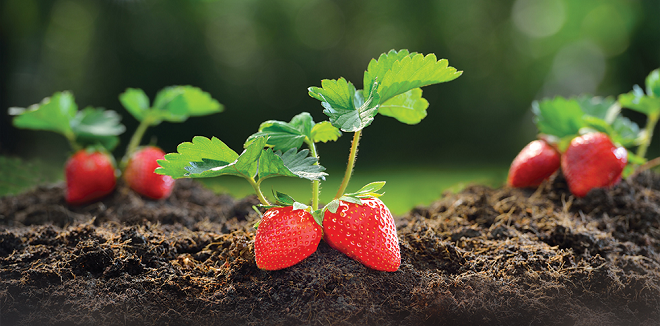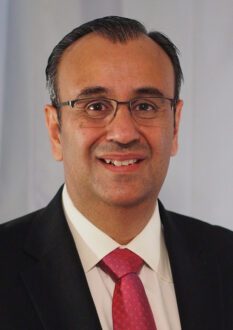

Sep 15, 2023Economics drives the global biologicals market
The global agricultural biologicals industry is set to explode from a market of about $9 billion currently to more than $25 billion by the end of the decade, but there are hurdles and more growing pains to face along the way.
A panel of representatives from Dunham Trimmer LLC spoke about the past, present and future of the agricultural biologicals market at the inaugural Salinas Biological Summit in June in Salinas, California. Dunham Trimmer provides market research and consulting on biologicals to a range of clients, from startups looking for investors (and vice versa), to distributors of those products and food manufacturers.
A newer trend is an interest from traditional agricultural chemical companies who see an opportunity to expand into the lucrative market, although it’s not without potential pitfalls.


Although “sustainability” is an often-used word when talking about biopesticides, biofungicides and biostimulants, Dunham Trimmer partner and vice president of global business Rick Melnick said growers have referred to “”sustainability” as trite and an oversimplification of what it typically describes.
“If you talk to five different stakeholders, you’ll probably get six different definitions of what sustainability really means,” said Mark Trimmer, a founding partner of the company.
Although sustainability, shorter pre-harvest intervals, (the amount of time between spraying when the crop can be harvested) and pest resistance management are often
mentioned as factors in the growth of the biologicals market, which Trimmer said has been about 15% a year in the past 10 years, the main driver is something else. So what’s driving the growth of biologicals?
“When I get asked that question, and I limit it to one thing that’s driving the industry, I’d say it’s consumer demand,” Trimmer said.
Consumers are more swayed by how products are grown when making purchasing decisions, he said, and if there’s a “sustainable” label that conveys the non-synthetic products used to grow the item, that’s a selling point, he said. Retailers across the globe have started implementing pesticide residue standards that are stricter than the regulations established by the government, he said.
Industry consultant Ashish Malik, a senior industry associate for Dunham Trimmer, said agricultural stakeholders are known for finding ways to do more with less, affordably and safe, and the ag biologicals market is seen by investors as a low-risk growth market.
“The first thing you learn out of ag school when you start growing is that like it or not, economics drives agronomics. It’s always first,” said Vatren Jurin, an agronomist and vice president of product development for Dunham Trimmer.
Communicating that value to growers is key, panelists said, with Trimmer identifying retailers and distributors as critical in conveying the value.
“You know their soils, you know the crops they’re growing, you know the challenges they’re facing, and you’re best equipped, probably — other than the grower himself — to identify which product can work for him,” Trimmer said.
Delivering a product that works doesn’t ensure repeat sales if growers aren’t educated
on using it properly, he said. Jurin agreed, saying a transfer of knowledge must take place.
Barriers and missteps
Malik said he has the opinion that he and other marketers have done some disservice in promoting biologicals by focusing on comparing them to the performance of synthetics. Every brochure or website has charts that showcase biological performance against a synthetic, but Maklik suggested emphasizing what sets the two products apart is important to note as well.
“We typically evaluate products on a standalone basis compared to a chemical, right?” he asked. “So what are we inherently saying? We’re saying we’re as good as a chemical.”
Those comparisons are necessary, but a step beyond that is to measure postharvest pesticide residues on crop samples and report those, he said. Some of the drawbacks to using biological products are well-known in the grower community, Trimmer said. Storage stability, with some products requiring refrigeration to maintain viability.
“Maybe 15 years ago, that might have been acceptable, but not anymore,” he said.


Some biological products don’t remain viable when mixed with chemicals, and that’s a barrier to acceptance, Trimmer said, but the leading barrier in the biologicals market is that lack of good bioherbicide. With herbicides being 45% of the applications of the entire chemical crop protection industry, a similar product that controls a spectrum of weeds is essential to growing the biologicals market, he said.
“Now, I suspect that in the next five to 10 years, we’re going to see some really effective bioherbicides come out,” he said. “I suspect the first ones could be controlling glyphosate-resistant weeds.”
Melnick said traditional crop protection and fertilizer companies are expressing interest in offering biologicals. When that happens, if it’s to be a successful process, company leadership must follow through and regularly signal their interest. Starting the ball rolling and then moving on to something else, sending a message of disinterest.
A sales rep who has a career selling traditional synthetic products will still spend energy promoting them unless there’s a clear incentive to highlight the new biologicals.
“If you’re just adding a couple of SKUs (stock-keeping units) on page 326 of your catalog, what’s a (sales rep’s) impetus for selling that specific thing?” Melnick asked.
The panel discussed the growth in sales and use of biological products in Brazil, about 75% of which go to row crops, a number unheard of in other countries, Trimmer said. The government supports the industry and there’s support for on-farm production of biological products, with 20% currently originating from farms that ferment their own microbials.
For the current global growth to continue, row crop farmers in other countries will need to embrace biological products as Brazilians have. Malik said the model there is unique, for three specific reasons:
- The industry is still regulated, but the three government agencies involved in oversight of new products going to market (agriculture, health and environmental ministries) have streamlined the process for low-risk products to cut the to-market timeframe from as many as four years down to about a year.
- Academic institutions are teaching future agronomists about biologicals.
- Start-ups offering biological solutions are receiving favorable terms on financing.
Malik said the future of biologicals brings many unknowns but is full of promise because of advancing technology, including engineered microbes, CRISPRCas, and pheromone research. Costs should decrease while product efficacy increases, he said.
Jurin said several dynamics are at play for the future of the industry: the growing system is evolving, tolerance to synthetic chemicals is increasing, and biologicals can allow for the return to a more diverse cropping system as opposed to monocrops. He also counts drones and robots as playing an important role in the future of agriculture.














